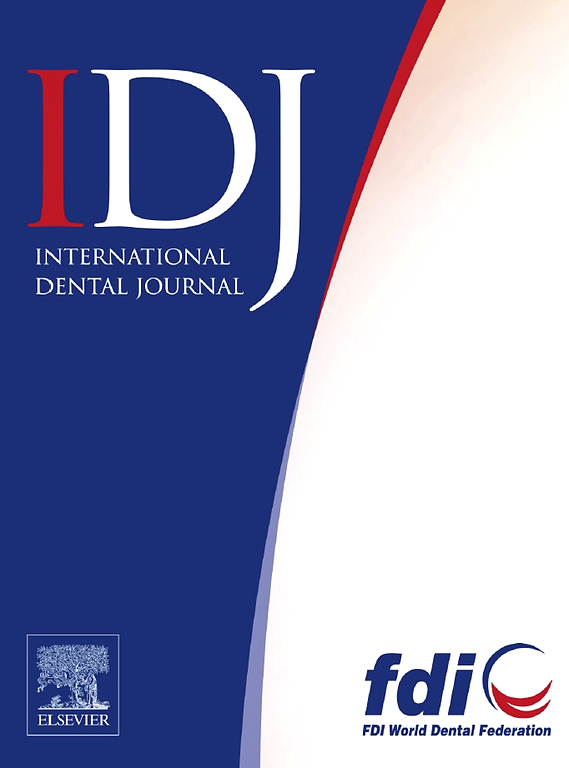模拟牙科手术过程中病毒气溶胶扩散的控制
IF 3.7
3区 医学
Q1 DENTISTRY, ORAL SURGERY & MEDICINE
引用次数: 0
摘要
虽然空气净化系统(ACS)和大容量排气系统(HVE)已被证明可以减少牙科生物气溶胶,但很少有研究关注病毒。本研究旨在通过详细和全面的采样方法和不同的示踪分子,评估HVE和ACS对牙科生物气溶胶模拟模型中雾化颗粒和空气传播病毒扩散的影响。方法采用sms2噬菌体和荧光素溶液分别作为病毒和分散体示踪剂。这些都被独立地添加到仪器冲洗系统中,并在牙科手术期间雾化。气溶胶缓解条件组为ACS、HVE、ACS + HVE和无缓解(对照)。气溶胶通过沉降在无菌滤纸和琼脂板上收集。此外,采用6级Andersen级联冲击器进行病毒空气采样。采用ImageJ软件对荧光颗粒进行分析,采用斑块法和逆转录定量聚合酶链反应(RT-qPCR)对噬菌体进行定量。结果在三种气溶胶生成程序(AGPs)中,shve联合ACS对病毒传播的减少最大。这种减少在荧光粒子和病毒的数量上都是明显的。这种效果在最远的地方更为明显。通过空斑测定,ACS + HVE组空气样本中最大气溶胶(>7.0 μm)中的病毒载量比对照组低93%,最小气溶胶(0.65-1.1 μm)中的病毒载量降低84% (P < 0.05)。通过RT-qPCR,与对照组相比,ACS + HVE组在空气样本中的病毒检出率也比ACS或HVE组低(>80%) (P < 0.05)。在ACS或HVE条件下,即使在没有感染性病毒的情况下,通过前、后手术和最远位置的斑块测定也能检测到病毒RNA。结论HVE与ACS联用对表面和空气样品的雾化颗粒和病毒有协同减少作用。通过全面深入的评估,本研究发现,在产生气溶胶的牙科手术过程中,大容量疏散和空气净化系统的结合是缓解病毒传播的最有效措施,根据所进行的AGP类型,这可以减少患者预约牙科护理之间所需的等待(休假)时间。在AGP期间产生的气溶胶越多,防止牙科工作人员和患者之间交叉污染所需的时间就越长。此外,我们的研究结果支持在牙科手术中使用高压灭菌、面罩和合身的口罩,不仅在大流行期间,而且在日常实践中也是如此。本文章由计算机程序翻译,如有差异,请以英文原文为准。
Control of Viral Aerosol Dispersion During Simulated Dental Procedures
Aim
Although air-cleaning systems (ACS) and high-volume evacuation (HVE) have been shown to reduce dental bioaerosols, few works have looked at viruses. This study aimed to assess the effects of HVE and ACS on dispersion of aerosolised particles and airborne viruses in a simulation model of dental bioaerosols using a detailed and comprehensive sampling approach and different tracer molecules.
Methods
MS2 bacteriophage and fluorescein solution were used as viral or dispersion tracers, respectively. These were added independently to the instrument irrigation system and aerosolised during dental procedures. Aerosol mitigation condition groups were ACS, HVE, ACS plus HVE, and No mitigation (control). Aerosols were collected via settlement onto sterile filter papers and agar plates. In addition, a 6-stage Andersen cascade impactor was used for viral air sampling. Fluorescent particles were analysed using ImageJ software, and bacteriophage was quantified using plaque assays and reverse transcription quantitative polymerase chain reaction (RT-qPCR).
Results
HVE combined with ACS produced the highest reduction in viral spread among the three aerosol-generating procedures (AGPs). This reduction was evident both in the number of fluorescent particles and that of viruses. The effect was more pronounced at the farthest sites. By plaque assay, viral loads in the largest-sized aerosols (>7.0 μm) from air samples were 93% lower in the ACS plus HVE group compared with control, and the load in the smallest aerosols (0.65-1.1 μm) was reduced by 84% (P < .05). By RT-qPCR, the ACS plus HVE group also reduced viral detection in air samples (>80%) more than ACS or HVE alone compared with the control group (P < .05). In ACS or HVE condition, viral RNA was detected even in the absence of infectious virus detected by plaque assay for anterior versus posterior procedures and in the farthest positions.
Conclusions
A synergistic effect was obtained in the reduction of aerosolised particles and viruses from surfaces and air samples when HVE was combined with ACS.
Clinical Relevance
Using a comprehensive and depth assessment, this study found that the combination of high-volume evacuation and air-cleaning systems was the most effective measure in mitigating virus dispersion during aerosol-generating dental procedures, translated into lower required waiting (fallow) times between patients’ appointments for dental care depending on the type of AGP conducted. The more aerosols are produced during an AGP, the longer it takes to prevent cross-contamination among dental staff and patients. In addition, our findings support the use of HVE, face shields, and well-fitting masks in dental procedures, not only during pandemics but also in everyday practice.
求助全文
通过发布文献求助,成功后即可免费获取论文全文。
去求助
来源期刊

International dental journal
医学-牙科与口腔外科
CiteScore
4.80
自引率
6.10%
发文量
159
审稿时长
63 days
期刊介绍:
The International Dental Journal features peer-reviewed, scientific articles relevant to international oral health issues, as well as practical, informative articles aimed at clinicians.
 求助内容:
求助内容: 应助结果提醒方式:
应助结果提醒方式:


